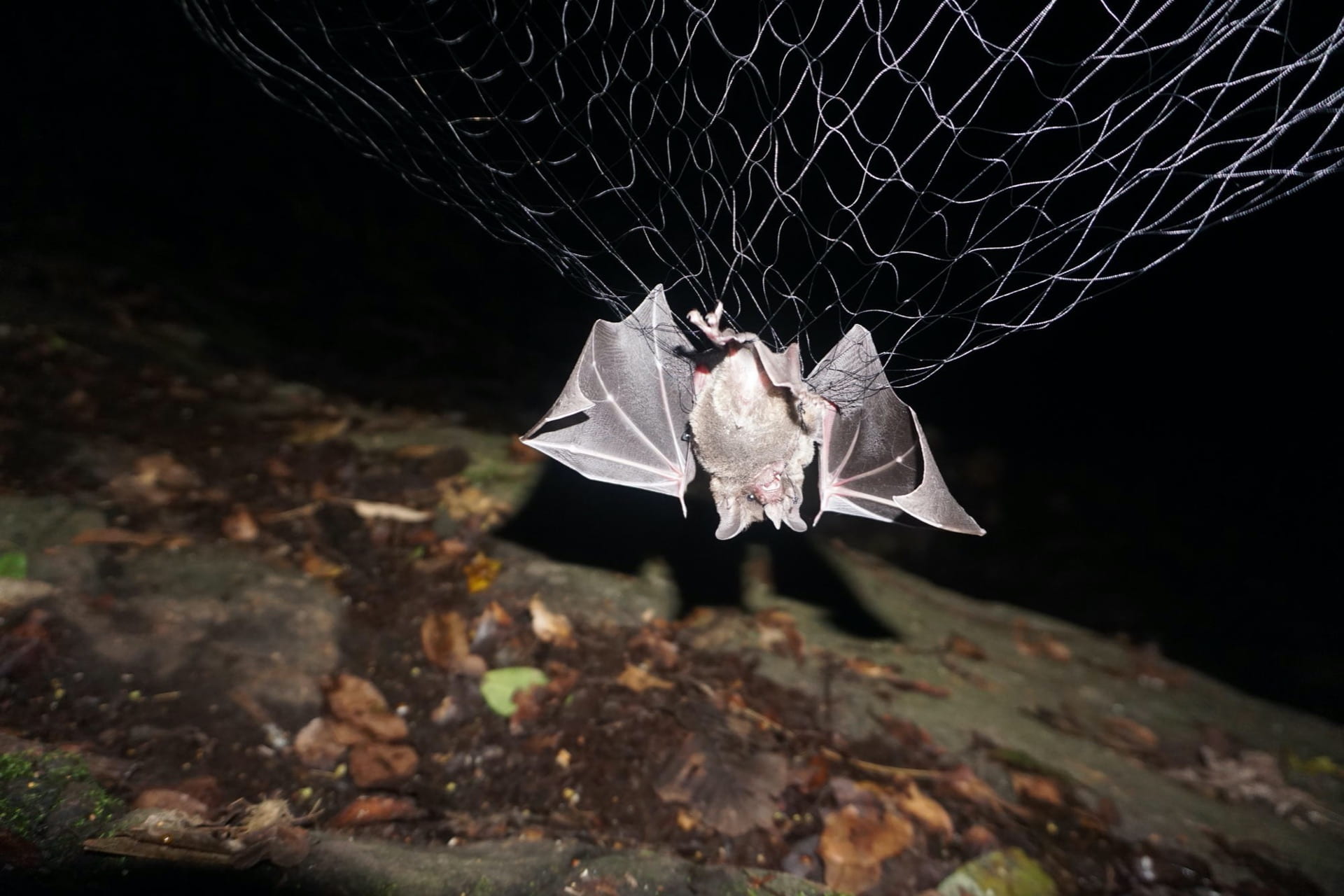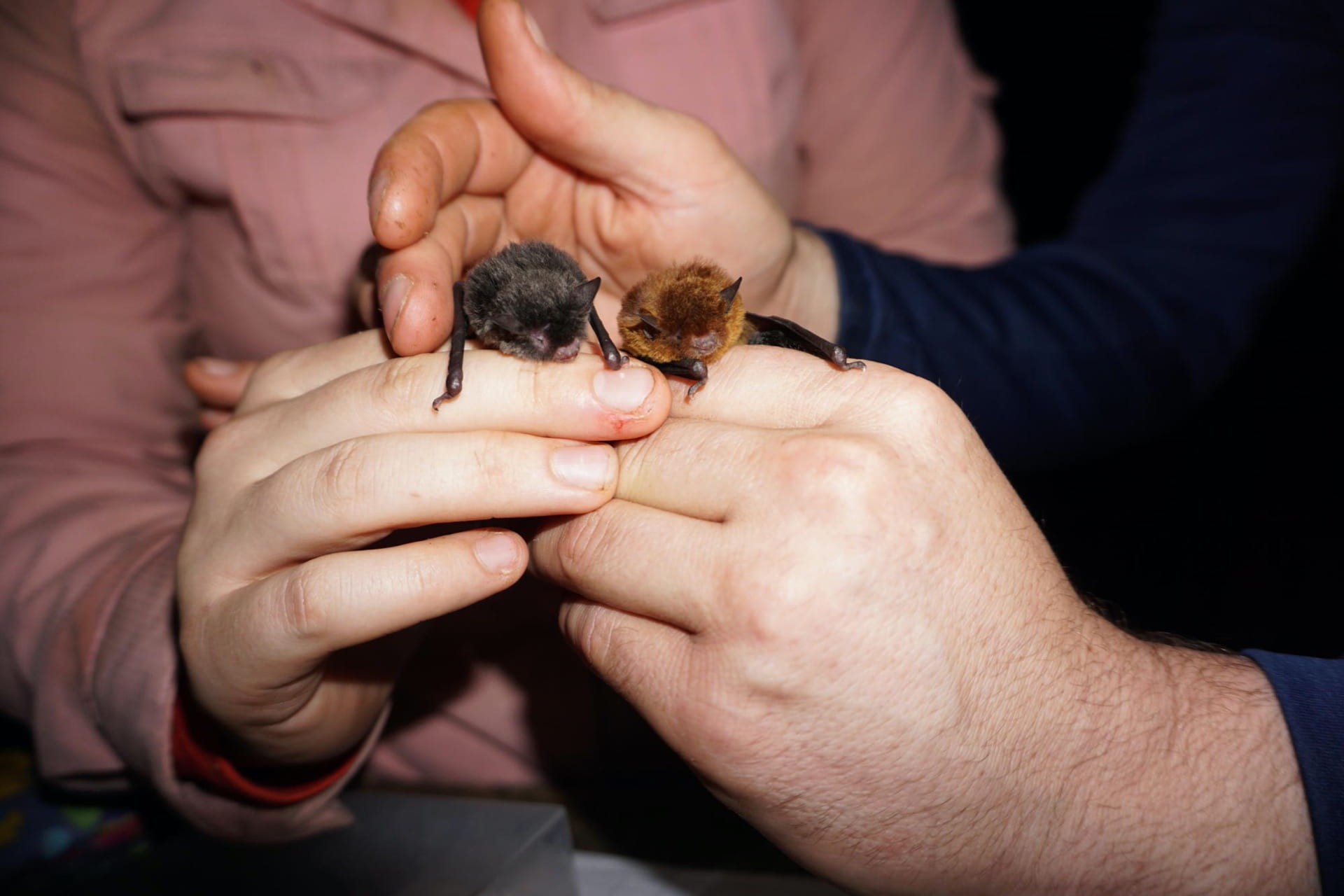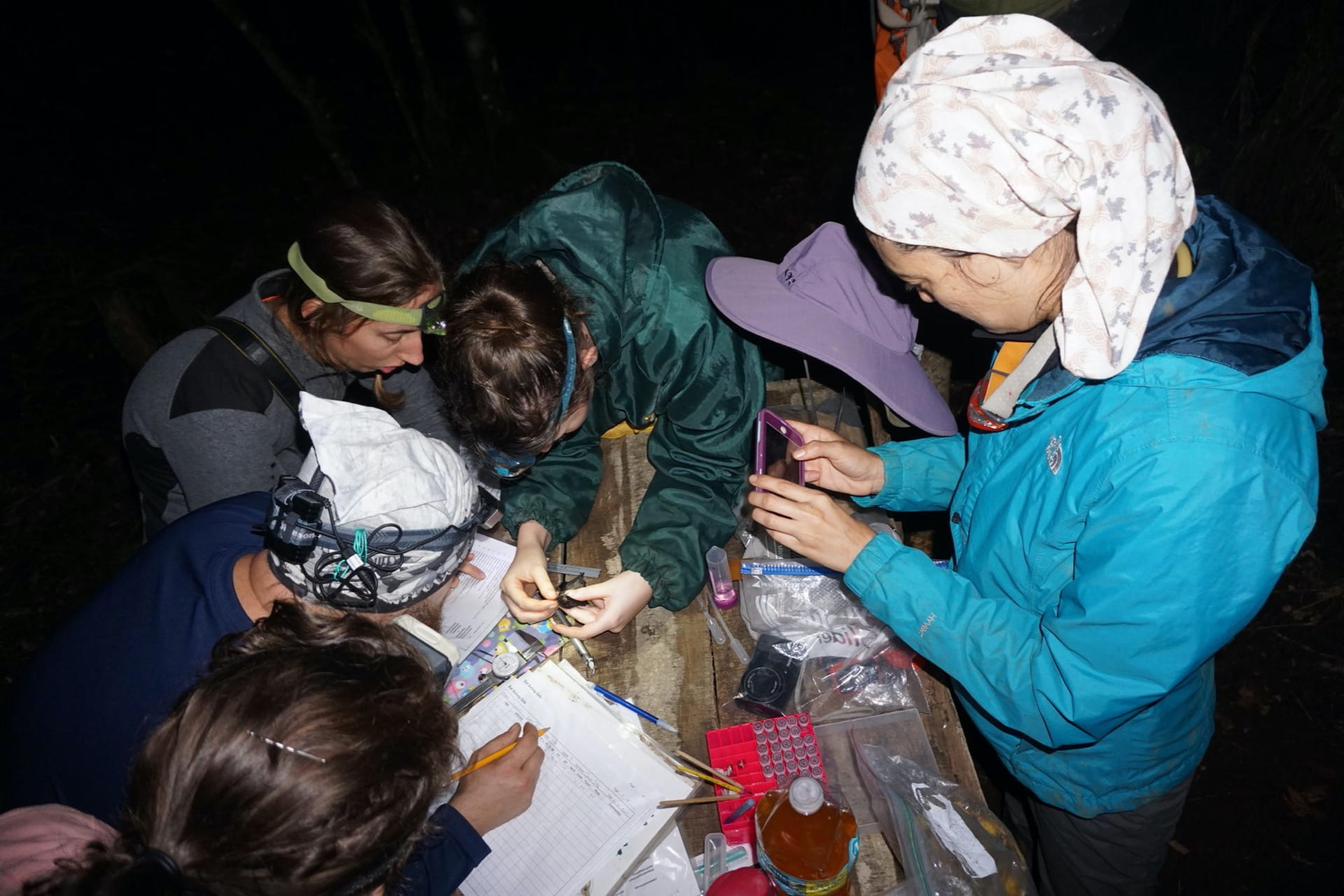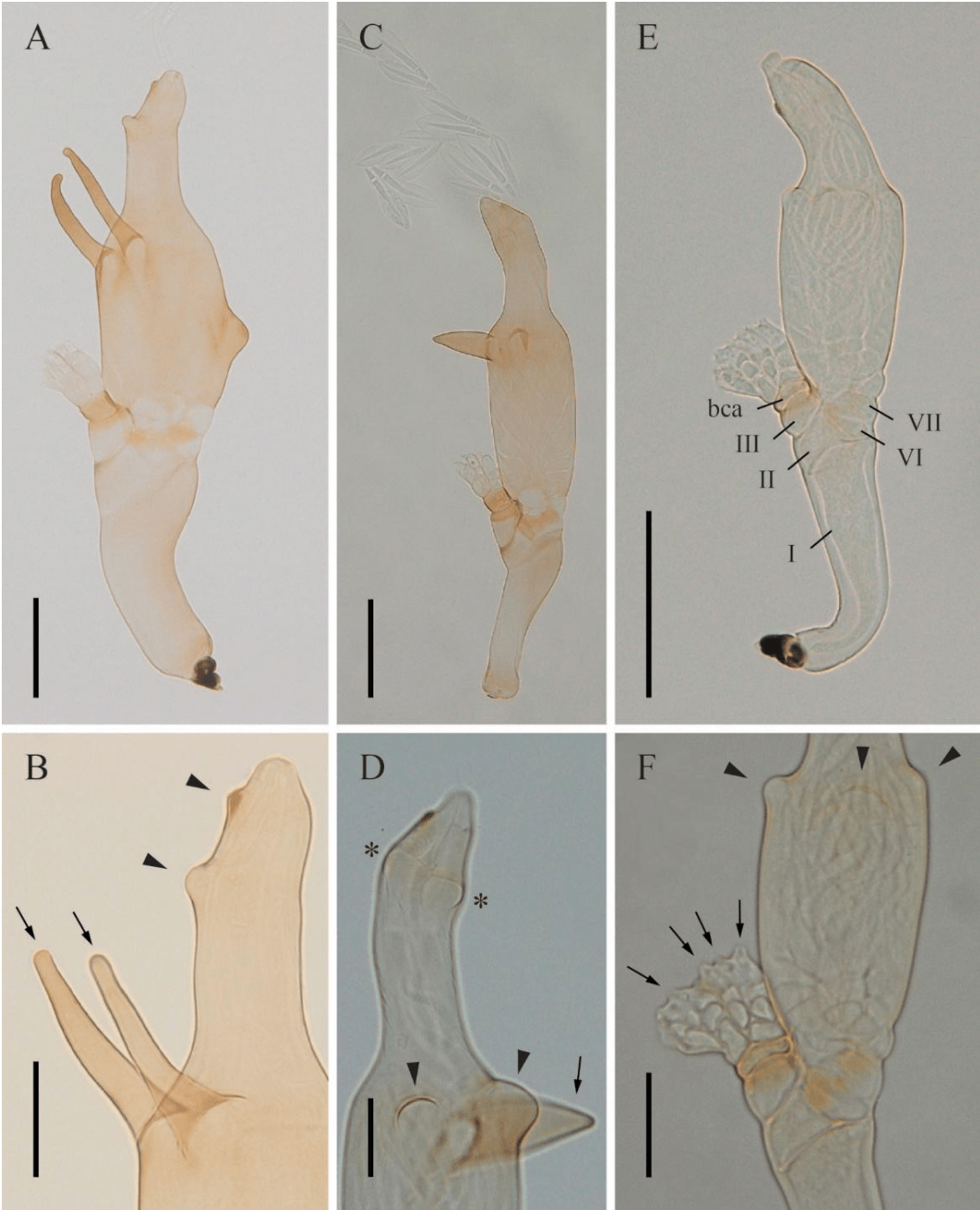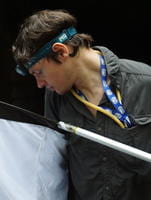
About the Author
Danny Haelewaters, a 2018 PhD graduate from Harvard University, is currently associated with Purdue University and the University of South Bohemia (Czech Republic). His Twitter handle is @dhaelewa.
Capturing Bats to Find Fungi on Flies
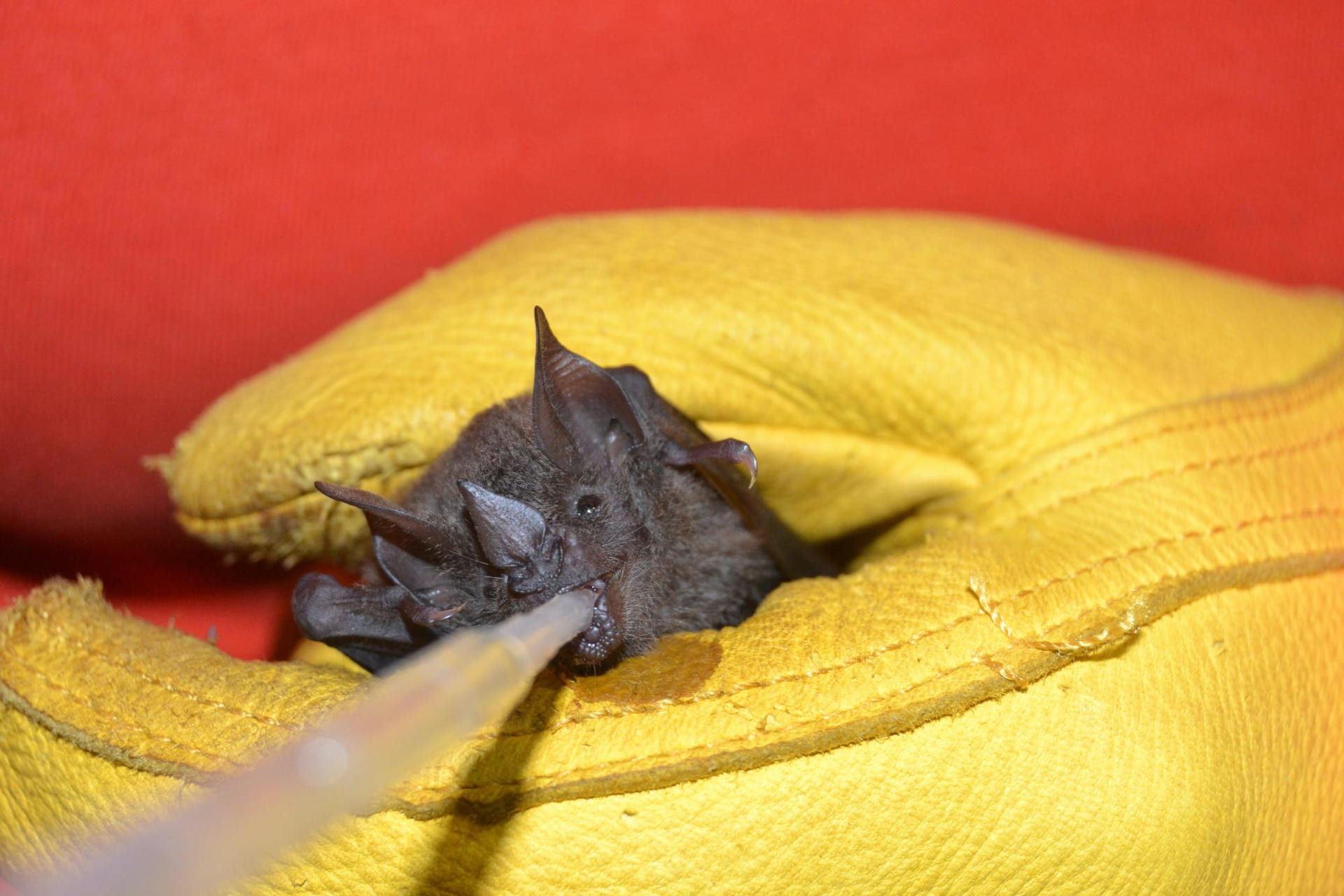
After processing our bats, we provide sugar water to the nectar-feeding and fruit-eating ones before release. This is a Carollia perspicillata bat, with the leaf nose that is so typical for the family of New World leaf-nosed bats.
It was the fourth night of fieldwork in the Chucantí Nature Reserve cloud forests in the Darién Province. The expedition at Chucantí was part of a three-month collecting trip in Panama, funded by the David Rockefeller Center of Latin American Studies, the Smithsonian Tropical Research Institute, and the Mycological Society of America. Cerro Chucantí had been under severe threat of logging, farming, and cattle ranching activities, until it was purchased by Guido Berguido and his colleagues at Asociación Adopta el Bosque Panama (ADOPTA). Now, the area is recovering, and many Panamanian and international researchers are studying plants, invertebrates, amphibians, reptiles, and fungi. Some of the species that are discovered are new to science and often endemic, such as the Chucantí salamander or Bolitoglossa chucantiensis.
I and five field assistants had captured 120 bats during the three previous nights and were ready for more. We set up our mist nets at what we called Camp Site. Mist nets are almost like volleyball nets but instead of being tight, they form baggy pockets. When a bat hits the net, it falls in one of the pockets and becomes entangled. Sadly, it was a quiet night for numbers of bats. We captured 16 bats in total, significantly less compared to the other nights. However, we captured six species, including Myotis riparius, one of the cutest bats you can imagine. They have a fluffy look with their long and woolly fur and you could easily fit five or six such fluff balls in the palm of your hand. This species can vary in color between reddish and blackish, which we were able to witness at Chucantí. In addition, we also captured more common species, such as Carollia perspicillata and Artibeus jamaicensis, which are both fruit-eating bats and can accelerate forest regeneration because they are important dispersers of seeds. We also captured a Trachops cirrhosis, the frog-eating bat, and two Carollia brevicauda bats, which are abundant but less common than C. perspicillata.
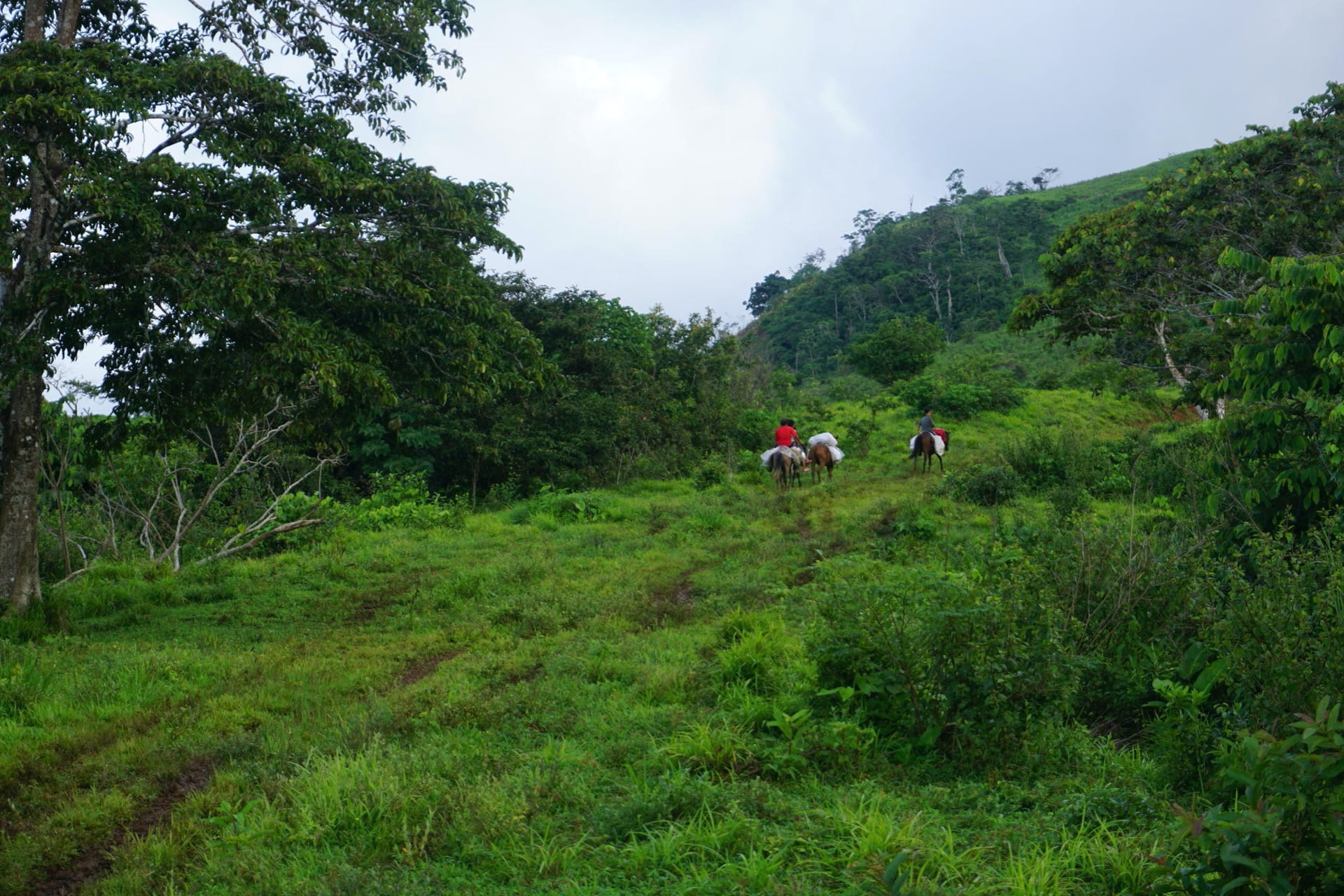
The road to Chucantí research station was long and muddy, but had beautiful sights. We traveled from morning to evening, walking by small private properties, pastures, and patches of rainforest.
You should know that I am not particularly interested in bats. I think they are adorable and they are absolutely fascinating in terms of adaptations that allow them to fly and to be nocturnal. But I am not a mammologist. No, I study fungi. So then why capture bats? Well, bats serve as hosts for a lineage of flies that suck on blood. They are all referred to as “bat flies” although there are two families, Streblidae and Nycteribiidae. The bat flies that we find in the neotropics are all streblids. Again, I am not so much interested in the flies, but rather in the fungal ectoparasites that can occur on them. These fungi—categorized as Laboulbeniales—are unique among related fungi in that they do not form hyphae but instead produce multicellular unit of determinate growth, or thalli. Now what was so interesting about that fourth night at Chucantí? Well, those two Carollia brevicauda bats each carried a Trichobius joblingi bat fly that was infected with Laboulbeniales. This bat fly is relatively common, and I find Laboulbeniales on this species all the time. However, one of these two bat flies was infected with what I originally thought of as an undescribed species of Laboulbeniales!
Of the currently known species of Laboulbeniales, less than 1% are described based on molecular data. That is a problem in an age we are finding more and more species that cannot be circumscribed based on morphology. Such species are often referred to as being cryptic. To make things more complicated, also the opposite is true—a single phylogenetic species can have multiple morphologies. This we call polymorphism. As a result, I knew I had to generate sequence data of my presumed new species. I extracted DNA and amplified the large subunit “barcode,” the region of the genome that is useful for successful identification to species level. To my surprise, the presumed undescribed species was identical to a species I had previously described even though morphologically they were very different. In the end, I described the fungus on Trichobius joblingi from Carollia brevicauda as a morpho-type. Its formal name is Gloeandromyces pageanus forma alarum. The epithet “alarum” refers to the growing position of this morpho-type; it only grows on the base of the soft wings.
- A Carollia perspicillata bat hanging out in our mist net, waiting to be disentangled.
- These two Myotis riparius bats flew in our nets together. One was an adult female and the other was a juvenile female, who weighed just 3.0 grams! We think they might have been mum and daughter. After careful processing, we released them together.
- This was our processing station. Bats went careful examination: we sexed each specimen, checked its reproductive status, identified to species, measured the forearm length, took its weight, and collected bat flies.
With this research, I not only hope to discover new species, but I also want to gain a better understanding of multitrophic interactions. We take data from every specimen that goes through our hands; all bats that we ever captured and all bat flies that we collected, infected and uninfected, are entered in a database, along with a number of traits, such as ecology and diet. Based on information from inaccessible areas like Chucantí Nature Reserve but also from places that are heavily disturbed by human activities, one of the main questions I would like to answer is what traits affect parasitism of bat flies by Laboulbeniales fungi. That is a very broad question, and so we can ask several sub-questions, such as: Does roosting behavior of bat hosts affect parasite prevalence of Laboulbeniales on bat flies? Does habitat alteration affect parasitism by Laboulbeniales? And how does parasitism change in bat species thriving in altered habitats relative to those species critically threatened or endangered?
More Student Views
Of Salamanders and Spirits
I probably could’ve chosen a better day to visit the CIIDIR-IPN for the first time. It was the last week of September and the city had come to a full stop. Citizens barricaded the streets with tarps and plastic chairs, and protest banners covered the walls of the Edificio de Gobierno del Estado de Oaxaca, all demanding fair wages for the state’s educators. It was my first (but certainly not my last) encounter with the fierce political activism that Oaxaca is known for.
Public Universities in Peru
Visits to two public universities in Peru over the last two summers helped deepen my understanding of the system and explore some ideas for my own research. The first summer, I began visiting the National University of San Marcos (UNMSM) to learn about historical admissions processes and search for lists of applicants and admitted students. I wanted to identify those students and follow their educational, professional and political trajectories at one of the country’s most important universities. In the summer of 2025, I once again visited UNMSM in Lima and traveled to Cusco to visit the National University of San Antonio Abad del Cusco (UNSAAC). This time, I conducted interviews with professors and student representatives to learn about their experiences and perspectives on higher-education policies such as faculty salary reforms and the processes for the hiring and promotion of professors.
Post-Secondary Education Access in Peru
Over the summer, I visited four public schools in Peru located in two regions, about 1,200 miles apart from each other. I interviewed teachers, principals and high school juniors and seniors. I wanted to discover their perspectives on perceived opportunities and barriers for students to plan for and fulfill their higher education goals. I also interviewed the superintendent at each school district to learn about local initiatives aimed at decreasing barriers to higher education transition.

